
Review on 🔌 Eve Energy: Apple HomeKit Smart Plug & Power Meter with Schedules, Switches, App Compatibility, Bluetooth & Thread by Otto Suarez

HAS A PHYSICAL POWER BUTTON! Ideal for auto-charging iOS devices
Ryan Amiro *wrong*. These smart plugs have a physical power button. The power status LED (the light that turns green when the plug is powered on) IS THE PHYSICAL POWER BUTTON. That's right, if you click on the small power indicator, you can physically turn the smart plug on or off. This feature is described on page 6 of the Getting Started Guide, located under the tabs on the lid of the Smart Plug box. I bought this smart socket to automate my iOS/iPhone charging and it is perfect. If you want to preserve the health of a lithium battery (your device's ability to hold a charge), do not allow it to charge above 80% (charging above 80% will damage the battery's chemistry over time). Newer MacBook Pro models (at least 2016 and up, and possibly other models) will actually automatically stop charging at 80% if you leave your laptop plugged in at all times. Unfortunately, this feature is not available for iOS devices. iOS devices have an "Optimized Charging" battery setting that will try to minimize your battery charge time to over 80% and wait until the last moment to charge over 80%, but it will still charge over 80%. The HomeKit Smart Plug and Shortcuts app lets you tell your iPhone to turn off the plug when it's 80% charged. I've tried Wi-Fi Smart Connectors, but they're unreliable (with an automatic that can connect to the Wi-Fi Smart Connector maybe 70% of the time). This bluetooth smart socket is very reliable and never stopped turning on or off as per shortcut automation. If you travel a lot (or like to charge in different places like work and home), a Bluetooth smart plug is better than a Wi-Fi plug because the Wi-Fi plug has to be set up from scratch each time Switch Wi-Fi networks (which means you have to fix your shortcuts every time too). If you want to automate the charging of your iPhone, you need to charge it *every time* with a smart plug.1. Add a Smart Jack to your iPhone.2. Open Shortcuts app 3. Go to Automation tab4. Click "+” in the top right corner of the screen5. Select "Create personal automation"6. Scroll down about 6 sections and tap Battery Level 7. Move the slider to 80%8. Select Rise above 80%9. Click "Next”10 at the top right. Click on "Add Action"11. Type "Home" in the search bar. 12. Select "___ Manage Home" (whatever your home is called). 13. In the Install action, click Scenes and Accessories14. Select that smart plug, then click Next (note that you can add multiple devices, so you can set up different smart plugs for different locations, but you'll get error messages for smart plugs that aren't nearby) 15 Make sure the plug icon below says "Off". When Enable is displayed, tap the plug icon to toggle it to Disable16. Click "Done”17 at the top right. If you want, you can add another action like "vibrate device" and/or "show notification" to let you know that the automation is running18. After adding all the required actions, click "Next”19 in the top right corner. Turn off "Ask before starting” below (tap the green switch so it turns grey) 20. Confirm "Don't ask” 21. Tap "Done” in the upper right corner. To keep your battery as healthy as possible, you also need to create another automation that turns on the plug when the battery level "falls below 50%". You can set this value to 20%, but for best battery health set it to 50%. You can also set the backup automation to 85% and 45% in case your phone doesn't communicate with the smart plug (this happens about 30% of the time with Wi-Fi smart plugs).
- Rugged design
- No auto-charging
New products
Comments (0)
Top products in 🔌 Power Plugs
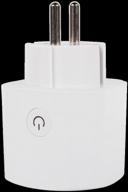
Smart socket ELDEV WI-FI 16A ELDEV (Alice, Google Home, Marusya) Tuya protocol, works without a gateway, Smart Plug

15 Review
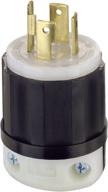
Leviton 2711 Industrial Grade 30 Amp Locking Plug - NEMA L14-30P, 125/250 Volt, Grounding, Black-White

9 Review
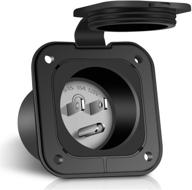
🔌 WELLUCK 15 Amp Flanged Inlet 125V – Waterproof RV Shore Power Inlet Plug: Ideal for Marine Boats, RVs, Sheds & Generators

9 Review

🔌 Amysen Smart Plug - Certified Compatible with Alexa, Echo & Google Home - WiFi 2.4G (4-Pack)

9 Review
Another interesting products
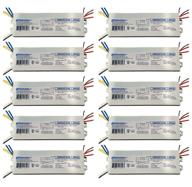
🔌 Robertson 2P20132 Quik-Pak: 10 Fluorescent eBallasts for 2 F40T12 Linear Lamps, Preheat Rapid Start, 120Vac, 50-60Hz, Normal Ballast Factor, NPF, Model RSW234T12120 /A (Crosses to RSW240T12120 /B)

4 Review
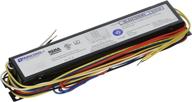
Robertson Worldwide ISL432T8HEMV AH 3P20160 120-277V 50-60Hz High Power Factor 4 F32T8 Linear Lamp Fluorescent eBallast

6 Review

⚡️ Sunpark LC-12014T (1) FC12T9 32W Circline (1) 2D 38W (1) FC16T9 40W Circline (1) FC9T9 30W Circline Lamp Compact Electronic Fluorescent Ballast with Circline Lamp Plug 120V

7 Review
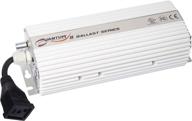
💡 Hydrofarm Quantum QT400 Dimmable Ballast for 400W Grow Lights

5 Review

